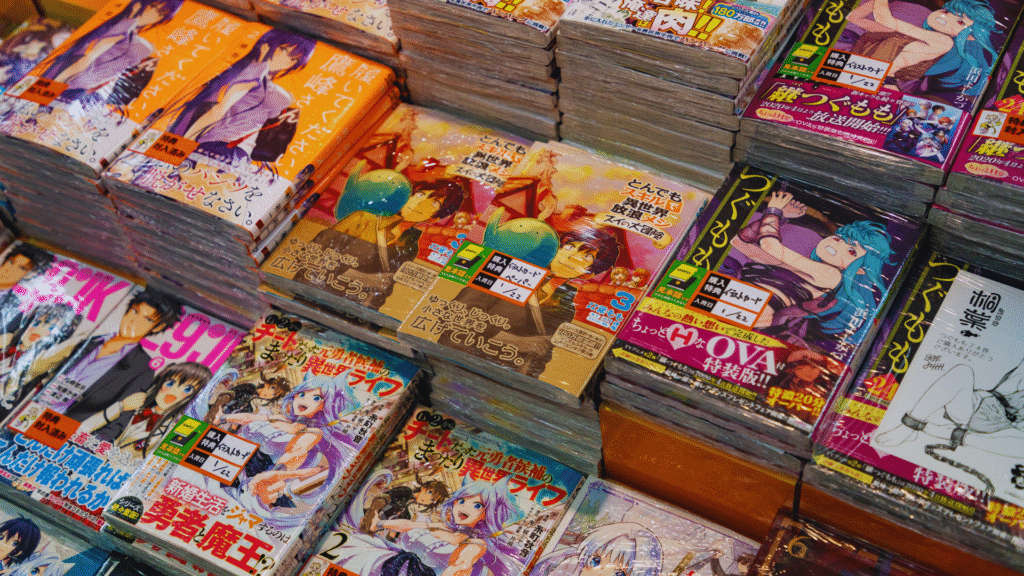Manga has significantly shaped the landscape of comic storytelling across the globe. With its unique blend of visual artistry and narrative depth, it has introduced innovative techniques that have influenced a plethora of Western comics. The impact of manga is evident in the evolving storytelling methods, character development, and thematic complexity found in contemporary comics.
As readers increasingly embrace manga, traditional comic narratives have expanded to incorporate elements found in these Japanese comics. Techniques such as panel pacing, emotional expression, and intricate world-building have become more prevalent, enriching the storytelling fabric of comics overall. This shift has prompted creators to experiment with new formats, appealing to a wider audience and enhancing the reader’s experience.
The cross-pollination of ideas between manga and comics has fostered a creative synergy that pushes the boundaries of the medium. This melding not only highlights the cultural significance of manga but also showcases its role as a catalyst for diversity in comic storytelling. Engaging with this topic reveals the dynamic relationship that defines how stories are told today.
Manga’s Unique Storytelling Techniques
Manga employs distinct storytelling techniques that set it apart from other forms of comic narration. Key aspects include innovative panel layouts, dynamic use of dialogue and onomatopoeia, effective characterisation, and varied narrative structures. Each of these techniques contributes to the immersive experience that manga offers.
Panel Layouts and Visual Composition
Manga’s panel layouts are often unconventional compared to Western comics. Artists utilise a range of panel sizes and arrangements to guide the reader’s eye, creating a rhythm for the narrative.
Composition elements include:
- Asymmetry: This draws attention and adds dynamism to the storytelling.
- Vertical panels: Common in action scenes, these can enhance the pace and tension.
- Bleeding panels: When panels extend to the edge of the page, they invite the reader into the action.
These techniques allow for expressive storytelling, balancing visual and written elements.
Use of Dialogue and Onomatopoeia
Dialogue in the manga is typically concise, with characters expressing emotions clearly and efficiently. The use of onomatopoeia plays a significant role, as sound words visually enhance the reading experience.
Common techniques involve:
- Sound effects: Words like “bang” or “swoosh” are integrated into the artwork, adding depth.
- Emotion expression: Characters’ internal thoughts are often presented in stylised typography, reflecting their mood.
These methods create a more engaging and dynamic narrative, allowing readers to feel the impact of each scene.
Characterisation and Emotional Expression
Characterisation in manga focuses on immediate visual cues to convey personality. Artists often employ facial expressions and body language to express emotions effectively. This visual shorthand enables readers to connect quickly with the characters.
Important characteristics include:
- Distinctive designs: Unique styles help differentiate characters and signify their roles.
- Expressive traits: Enlarged eyes or exaggerated expressions amplify feelings, making them more relatable.
Together, these techniques foster emotional resonance within the story, enriching the reader’s experience.
Narrative Structures and Genres
Manga encompasses a wide variety of genres, from romance to horror, each utilising unique narrative structures. Unlike Western comics, manga often follows different pacing and storytelling arcs.
Some common narrative characteristics include:
- Long-form storytelling: Series can extend over hundreds of chapters, allowing deeper plot development.
- Episodic versus serial formats: Some narratives are structured as standalone episodes, while others build on overarching plots.
These elements contribute to the diverse storytelling landscape of manga, accommodating various audience preferences and interpretations.
Historic Influence of Manga on Comic Books
Manga has left a significant mark on comic storytelling, influencing styles, narratives, and character development across the globe. From its early roots to modern adaptations, the progression of manga has shaped the comic landscape in diverse ways.
Early Japanese Manga and Its Global Spread
The origins of Japanese manga can be traced back to the early 20th century, with influences from traditional art forms and ukiyo-e prints, notably by artists like Katsushika Hokusai. These early visuals laid the groundwork for a distinct narrative style centred on dynamic expressions and storytelling.
By the mid-20th century, Osamu Tezuka emerged as a pivotal figure, drawing inspiration from Western comics, including the works of Walt Disney. His creation, “Astro Boy”, marked significant advancements in character design and emotional depth within narratives, captivating readers and setting trends that encouraged the global spread of Japanese comic art.
Key Creators and Cross-Cultural Inspirations
Osamu Tezuka is often regarded as the “God of Manga” for his vast contributions and innovative storytelling methods. His influence inspired numerous artists, establishing a blueprint for character-driven plots that resonate internationally.
During the late 20th century, manga began to influence Western comic creators. Works like “Naruto” and “Pokémon” reached a broad audience, emphasising themes of friendship, perseverance, and adventure. These narratives encouraged Western comic artists to integrate similar storytelling strategies, expanding the appeal of comics.
The Rise of Modern Manga and Anime Adaptations
The late 20th and early 21st centuries saw modern manga skyrocketing in popularity, with series such as “Dragon Ball” and “Attack on Titan” garnering massive followings. This popularity led to numerous adaptations into anime, further transcending cultural boundaries.
Manga’s influence is evident in contemporary comics, with many artists adopting its visual style and narrative techniques. Elements such as episodic storytelling and character arcs from manga are now common in Western comics, showcasing the mutually enriching relationship between the two forms.
Comparative Effects on Western and Eastern Comics
Manga has influenced narrative structures, artistic approaches, and the evolution of various comic formats in both Western and Eastern comic cultures. This interplay showcases distinct trends in storytelling and visual representation.
Narrative Trends in American Comics
Traditional American comics often emphasise episodic storytelling combined with superhero tropes. Story arcs typically conclude in single issues or multi-issue runs. Manga, conversely, frequently employs long-form narratives with extensive character development and intricate plots that may span numerous volumes.
This narrative style has led to the incorporation of multi-layered storytelling in American graphic novels. Writers now explore themes such as character morality, personal trauma, and social issues. Series like Ms. Marvel and Saga illustrate this shift, combining dynamics inspired by manga to appeal to diverse audiences.
Adoption of Artistic Styles and Visual Language
Manga’s influence on the visual language in American comics is evident in the adoption of certain artistic styles. Techniques such as chibi character representation and dynamic action sequences have gained popularity. Artists are using bold inks and enhanced visual storytelling techniques, such as intricate backgrounds and character expressions.
Furthermore, the use of panelling has evolved. Western comics now often employ techniques similar to manga, such as varied panel sizes and arrangements to convey pacing in storytelling. This also includes more focus on emotional resonance through visuals rather than solely relying on dialogue within balloons.
Impact on Graphic Novels and Webcomics
The growth of graphic novels and webcomics shows significant influence from manga. Creators are more frequently producing longer-format stories that allow for deeper exploration of character arcs and themes. Webtoons, for example, have gained traction by offering content that resonates with the manga format, prioritising readability and accessibility.
Scanlation has also emerged, bringing untranslated manga to global audiences, thus influencing how American creators approach their work. The accessibility of webcomics allows for experimental storytelling, leading to highly innovative formats that often reflect manga’s stylistic and narrative choices.
Cultural and Societal Impact of Manga
Manga has significantly altered cultural landscapes and societal dynamics globally. Its influence extends from entertainment to literacy and the shaping of pop culture, impacting diverse communities.
Manga as a Cultural Phenomenon
Manga emerged as a vital part of Japanese culture, gaining prominence post-World War II. Its unique art style, often featuring characters with spiky hair and exaggerated expressions, resonates deeply with audiences. This distinct visual language underscores emotional narratives, enhancing cultural connections.
Manga’s themes range from romance to adventure, appealing to various demographics. Titles like “One Piece” and “Naruto” have become emblematic of modern storytelling, showcasing cultural values and societal norms. They have evolved into global phenomena, influencing various art forms and inspiring new domains, such as anime and video games.
Influence on Youth, Literacy, and Entertainment
Manga has played a pivotal role in promoting literacy among young people. Frequent exposure to its engaging narratives and dialogue encourages reading habits. Educational tools incorporating manga-style graphics have emerged, aiding in language learning and comprehension skills.
Moreover, manga serves as a medium for exploring complex themes and social issues. It often addresses topics like identity, family, and social justice, fostering empathy and understanding among readers. This engagement with literature through entertainment helps bridge gaps between generations, making it a powerful tool for social dialogue.
Role in Japanese Pop Culture and Global Trends
As a cornerstone of Japanese pop culture, manga influences various aspects of daily life, from fashion trends to cosplay practices. Characters are frequently emulated in visual arts, fashion, and performance, highlighting the interconnectedness of media and lifestyle.
Globally, manga has inspired a diverse array of content, reshaping entertainment industries. Its storytelling techniques and artistic styles have been adopted in Western comics and graphic novels, creating a hybrid narrative form. This exchange showcases the power of manga in shaping trends, demonstrating its lasting impact beyond Japan.

